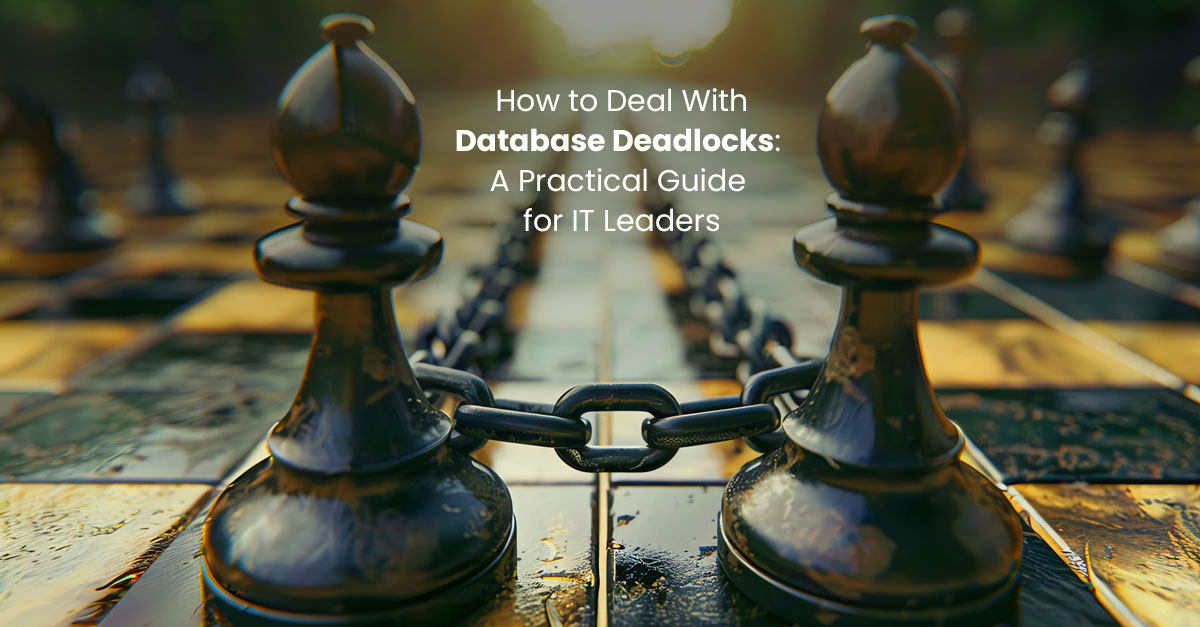Why Database Compression Can Improve Performance and Reduce Costs
How data compression works and when to implement it
We’ve watched storage bills climb, and query times drag as data volumes balloon. When backup windows creep into business hours and network saturation turns routine analytics into after-hours drama, it’s clear that throwing hardware at the problem only delays the your next headache. Database compression offers a way to shrink your footprint and speed up reads, if you roll it out smartly and measure the trade-offs.
Platform note: native compression support varies by engine. SQL Server gives you row-and page-level options plus columnstore compression; PostgreSQL uses TOAST for wide rows; Oracle packs its own Advanced Compression suite. Whatever toolset you pick, the underlying pattern is the same: fewer bytes to store, fewer bytes to move.
What database compression really does
Database compression reduces the bytes written to disk by spotting repeated patterns, removing padding, or reorganizing rows. In practice we see three core modes:
- Row compression for fixed-width fields.
- Page compression that adds a simple dictionary on top of row compression.
- Columnstore compression, packing data column-by-column with run-length and bitmap encoding.
In one hybrid-cloud environment we managed, switching “cold” tables, to page compression cut their disk footprint by 65 percent without an application change. Columnstore worked even better for read-heavy analytics tables, though it rarely made sense for our busiest OLTP schemas.
Where database compression improves performance (and where it may not)
Reading fewer bytes from disk usually translates to faster queries. Analytical scans in our tests ran 30–60% faster once data lived on compressed pages, because more rows fit in memory and SSD queues stayed clear. Even index seeks picked up speed as each 8 KB page stored more pointers. Backup and restore times shrank along with table sizes, turning three-hour maintenance windows into sub-hour jobs.
That said, compression isn’t a silver bullet. High-churn transactional tables with constant inserts or updates can suffer from the CPU overhead of recompressing pages. In one case, a busy order-entry table lost about 10% of write throughput under peak load when we applied page compression. The takeaway? Always test under your actual workload before broad roll-out.
Slashing costs with database compression
On the cost side, compression pays dividends fast. A manufacturing client reclaimed roughly 40% of their total storage across on-prem SAN and cloud disks after enabling compression. That savings translated into lower Azure premium-disk bills, fewer on-prem drive purchases, and faster snapshots that cut network-egress fees. Even with a modest CPU uptick, their overall spend dropped by nearly 25% in the first quarter and those savings rolled straight to IT’s budget forecast.
In another example, a client with seasonal peaks reduced their snapshot replication window by two hours each night, freeing cloud credits for more frequent batch jobs. It wasn’t magic, just clear math trading a small CPU premium for far larger I/O savings.
If you have nightly replication or seasonal peaks, compression also means fewer delays and more flexibility. It’s not just about saving space it’s about unlocking speed and scale.
Rolling out database compression in five simple steps
Rolling out compression works best when approached in a phased, low-risk way. We recommend this approach:
- Identify read-mostly or historical tables (audit logs, staging zones, reporting models).
- Run built-in advisors or sample scripts to project space savings.
- Test in a sandbox under peak workloads and capture CPU, I/O, and latency metrics.
- Apply compression in small batches during low-impact windows.
- Monitor table size, backup duration, I/O waits, and CPU consumption for each batch.
If your platform supports online or resumable compression, you can pause jobs at the close of each window and resume later, avoiding runaway operations.
Tips for steering clear of pitfalls
Rolling out database compression can unlock real value, but only if it’s done thoughtfully. Over the years, we’ve seen excellent strategies fall short, not because the technology failed, but because of common operational oversights. Compression affects your storage, performance, and resource usage, so even a small misstep can ripple across your environment.
To help you get it right the first time, here are five practical lessons (yes, nearly everything here goes by five… 🙂 ) we’ve learned from real-world deployments:
- Always baseline before you begin.
Capture storage usage, backup durations, I/O latency, and CPU metrics at the start. Without this, you’ll have no way to accurately measure improvement or spot regressions. - Automate compression alongside index maintenance.
Combining index rebuilds with compression in a single maintenance window helps reduce fragmentation and ensures consistency with minimal disruption. - Adjust fill factors on compressed tables.
Even compressed pages need tuning. Set appropriate fill factors to balance performance and space savings, especially on larger tables. - Keep rollback scripts handy.
Unexpected performance changes can happen. A simple script to revert compression can save hours of troubleshooting when time is short. - Throttle long-running jobs.
Compression tasks can spike CPU and I/O. Monitoring tools and safe thresholds let you pause or slow down jobs before they impact the system.
Remember, compression isn’t something you “set and forget.” It’s a strategic choice that needs oversight, especially in dynamic production environments. The goal isn’t just to save space it’s to do so without sacrificing stability. Apply these principles, and you’ll be well positioned to extract maximum value from your storage infrastructure, one table at a time
Final thoughts over coffee
Database compression isn’t a cure-all, but when applied judiciously it’s one of the most cost-effective levers in your toolkit. By shrinking I/O demand, accelerating backups, and cutting capacity spend, compression turns storage from a budget sink into an asset. Pick a noncritical table this quarter, run a quick proof-of-concept, and see how much you can reclaim. Your quarterly forecast and your weekends will thank you.
And if you’d rather move faster, we’re here to help. At Nova DBA, we design and implement compression strategies with your team, guide you through the metrics that matter, and help you reclaim storage and budget without adding complexity.
FAQ
1- Is database compression safe for my production environment?
Yes. When applied carefully. With proper testing and phased rollout, compression is a low-risk optimization strategy.
2- Will it slow down my write-heavy tables?
It can. High-churn OLTP workloads may experience some CPU overhead. That’s why testing on your own data is key.
3- Do I need to change my applications to use database compression?
In most cases, no. Compression happens at the database level and is transparent to the application.
4- Can I use compression on cloud databases too?
Absolutely. Compression works across hybrid and cloud-native platforms, including Azure and AWS.
5- How do I get started with database compression?
Start with a candidate table and measure. Or better yet, reach out we’ll help you pick the right starting point and validate the results.
More articles that might interest you

Authentication and Authorization: Critical Layers of Access Security
Protecting digital assets begins with securing access to them. But access control is not a one-time configuration. It is a… Read More
The Modern DBA: Evolving to Stay Relevant
When I started in IT over 30 years ago, being a DBA was a very different job. You were the… Read More
